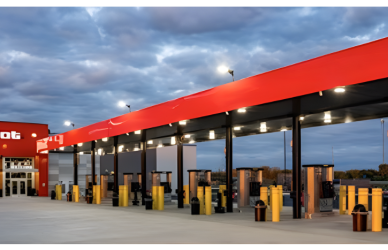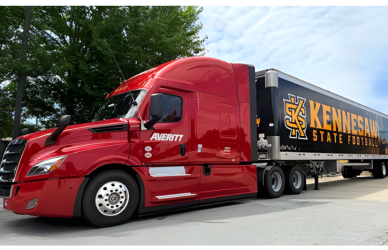Truck driving often involves navigating some of the most demanding routes in the United States. From steep mountain passes to congested urban corridors, understanding these challenges is essential for safe and efficient travel. This blog explores some of the most challenging truck routes in the USA and provides tips on how to handle them effectively.
- I-70 Through the Rocky Mountains
Interstate 70 (I-70) traverses the Rocky Mountains in Colorado, connecting Denver to the Utah border. This route is renowned for its high elevations and steep grades.
Challenges
- Elevation: The route includes the Eisenhower-Johnson Memorial Tunnel, which is the highest point on the Interstate Highway System at 11,158 feet above sea level.
- Weather: Heavy snowfall and icy conditions are common, particularly in winter.
- Curves and Grades: The road features significant elevation changes and tight curves.
Preparation Tips
- Check Weather Conditions: Monitor weather forecasts and road conditions before traveling.
- Maintain Your Vehicle: Ensure your brakes, tires, and engine are in good condition.
- Use Engine Brakes: Utilize engine braking to control speed on downhill grades.
- I-95 Through the Northeast Corridor
Interstate 95 (I-95) runs along the Eastern Seaboard from Maine to Florida, with significant challenges in the Northeast Corridor, particularly between New York City and Boston.
Challenges
- Traffic Congestion: This stretch is known for heavy traffic, especially during peak hours and around major cities.
- Urban Areas: Navigating through densely populated urban environments presents challenges.
- Frequent Construction: Regular construction and roadwork can cause delays.
Preparation Tips
- Plan Your Route: Use GPS and traffic apps to avoid congestion and find alternative routes.
- Monitor Construction Updates: Check real-time updates on road conditions and construction.
- Allow Extra Time: Factor in additional time for potential delays.
- U.S. Route 2 Through the Northern Rockies
U.S. Route 2 stretches from the Upper Peninsula of Michigan to the Pacific Northwest. The segment through the Northern Rockies, especially in Montana and Idaho, is known for its remote and rugged terrain.
Challenges
- Isolation: Limited services and repair facilities in remote areas.
- Weather: Snow and ice are common, particularly in winter months.
- Wildlife: The risk of wildlife crossings, particularly in rural sections.
Preparation Tips
- Carry Emergency Supplies: Bring essentials such as food, water, and a first-aid kit.
- Prepare Your Vehicle: Ensure your vehicle is equipped for cold weather and rough terrain.
- Be Vigilant for Wildlife: Stay alert for animals on the road.
- The Grapevine on I-5
The Grapevine is a segment of Interstate 5 (I-5) in California that crosses the Tejon Pass. Known for its steep inclines and sharp curves, it poses significant challenges for truck drivers.
Challenges
- Steep Grades: The Grapevine features grades of up to 6%, which can be strenuous for trucks.
- High Temperatures: Extreme heat in summer can affect vehicle performance and safety.
- Heavy Truck Traffic: The route is heavily used by trucks, increasing the risk of accidents.
Preparation Tips
- Monitor Temperature: Keep an eye on engine temperatures and tire pressure.
- Use Lower Gears: Utilize lower gears to manage steep inclines safely.
- Check Road Conditions: Stay updated on road closures or restrictions due to weather or accidents.
- Highway 101 Along the Pacific Coast
Highway 101, particularly the coastal stretch through California, presents challenges with narrow lanes and winding roads.
Challenges
- Narrow Lanes: Limited space makes passing and maneuvering difficult.
- Sharp Turns: The coastal route features numerous sharp curves.
- Fog and Visibility: Coastal fog can significantly reduce visibility.
Preparation Tips
- Drive Cautiously: Adjust your speed to account for narrow lanes and sharp turns.
- Use Fog Lights: Equip your vehicle with fog lights to improve visibility in foggy conditions.
- Stay Alert: Remain vigilant for sudden changes in road conditions and visibility.
Navigating the most challenging truck routes in the USA requires careful preparation and awareness. By understanding the unique difficulties of each route and following these tips, you can enhance your safety and efficiency on the road.











